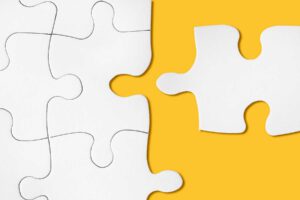Total atoms is 9 ( 2 carbon atoms, 5 hydrogen atoms, 1 oxygen atom and 1 hydrogen atom = 9 atoms) . For example, 238U, the most abundant form of uranium, is fissionable but not fissile: it undergoes induced fission when impacted by an energetic neutron with over 1MeV of kinetic energy. Nuclear fission more stable nuclei. Most of the uranium used in current nuclear weapons is approximately 93.5 percent enriched uranium-235. Fission, simply put, is a nuclear reaction in which an atomic nucleus splits into fragments (usually two fragments of comparable mass) all the while emitting 100 million to several hundred million volts of energy. Among the project's dozens of sites were: Hanford Site in Washington, which had the first industrial-scale nuclear reactors and produced plutonium; Oak Ridge, Tennessee, which was primarily concerned with uranium enrichment; and Los Alamos, in New Mexico, which was the scientific hub for research on bomb development and design. However, within hours, due to decay of these isotopes, the decay power output is far less. Most nuclear fuels undergo spontaneous fission only very slowly, decaying instead mainly via an alpha-beta decay chain over periods of millennia to eons. In the Hiroshima explosion, countless atoms of uranium were split apart in a nuclear chain reaction. Assuming that the cross section for fast-neutron fission of 235U was the same as for slow neutron fission, they determined that a pure 235U bomb could have a critical mass of only 6kg instead of tons, and that the resulting explosion would be tremendous. For example, Little Boy weighed a total of about four tons (of which 60kg was nuclear fuel) and was 11 feet (3.4m) long; it also yielded an explosion equivalent to about 15kilotons of TNT, destroying a large part of the city of Hiroshima. Other sites, notably the Berkeley Radiation Laboratory and the Metallurgical Laboratory at the University of Chicago, played important contributing roles. A few particularly fissile and readily obtainable isotopes (notably 233U, 235U and 239Pu) are called nuclear fuels because they can sustain a chain reaction and can be obtained in large enough quantities to be useful. Both approaches were extremely novel and not yet well understood, and there was considerable scientific skepticism at the idea that they could be developed in a short amount of time. This type of fission (called spontaneous fission) is rare except in a few heavy isotopes. Some processes involving neutrons are notable for absorbing or finally yielding energy for example neutron kinetic energy does not yield heat immediately if the neutron is captured by a uranium-238 atom to breed plutonium-239, but this energy is emitted if the plutonium-239 is later fissioned. However, the nuclear force acts only over relatively short ranges (a few nucleon diameters), since it follows an exponentially decaying Yukawa potential which makes it insignificant at longer distances. Hiroshima and Nagasaki A reactor built by Argonne National Laboratory produced the world's first usable amount of electricity from nuclear energy on Dec. 20, 1951, lighting a string of four light bulbs. The atomic number, or 'Z', records the number of protons at an atom's core. Also, an average of 2.5neutrons are emitted, with a mean kinetic energy per neutron of ~2MeV (total of 4.8MeV). Fermi had shown much earlier that neutrons were far more effectively captured by atoms if they were of low energy (so-called "slow" or "thermal" neutrons), because for quantum reasons it made the atoms look like much larger targets to the neutrons. Bohr grabbed him by the shoulder and said: Young man, let me explain to you about something new and exciting in physics.[28] It was clear to a number of scientists at Columbia that they should try to detect the energy released in the nuclear fission of uranium from neutron bombardment. In ordinary terms, this is a minuscule amount of energy. (The high purity for carbon is required because many chemical impurities, such as the boron-10 component of natural boron, are very strong neutron absorbers and thus poison the chain reaction and end it prematurely.). Why Does a Mushroom Cloud Look Like a Mushroom? They had the idea of using a purified mass of the uranium isotope 235U, which had a cross section not yet determined, but which was believed to be much larger than that of 238U or natural uranium (which is 99.3% the latter isotope). A chemist carries out this reaction in a bomb calorimeter. Not all isotopes are created equal when it comes to being readily split. [11] The fission reaction also releases ~7MeV in prompt gamma ray photons. Two other fission bombs, codenamed "Little Boy" and "Fat Man", were used in combat against the Japanese cities of Hiroshima and Nagasaki on August 6 and 9 (respectively) of 1945. For heavy nuclides, it is an exothermic reaction which can release large amounts of energy both as electromagnetic radiation and as kinetic energy of the fragments (heating the bulk material where fission takes place). On the other hand, so-called delayed neutrons emitted as radioactive decay products with half-lives up to several minutes, from fission-daughters, are very important to reactor control, because they give a characteristic "reaction" time for the total nuclear reaction to double in size, if the reaction is run in a "delayed-critical" zone which deliberately relies on these neutrons for a supercritical chain-reaction (one in which each fission cycle yields more neutrons than it absorbs). One class of nuclear weapon, a fission bomb (not to be confused with the fusion bomb), otherwise known as an atomic bomb or atom bomb, is a fission reactor designed to liberate as much energy as possible as rapidly as possible, before the released energy causes the reactor to explode (and the chain reaction to stop). At the point at which one of the neutrons produced by a fission will on average create another fission, critical mass has been achieved, and a chain reaction and thus an atomic explosion will result. It can be up to 1,000 times more powerful than an A-bomb, according to nuclear experts. The complexity of the plutonium bomb caused some concern among project engineers, so a test of the bomb was scheduled for July 16, 1945. Nuclear weapons use that energy to create an explosion. This tendency for fission product nuclei to undergo beta decay is the fundamental cause of the problem of radioactive high-level waste from nuclear reactors. Such a reaction using neutrons was an idea he had first formulated in 1933, upon reading Rutherford's disparaging remarks about generating power from his team's 1932 experiment using protons to split lithium. If more uranium-235 is added to the assemblage, the chances that one of the released neutrons will cause another fission are increased, since the escaping neutrons must traverse more uranium nuclei and the chances are greater that one of them will bump into another nucleus and split it. The difference between thermonuclear bombs and fission bombs . On the lump 648.6 trillion joules for the 8 kg sphere. The two go on to fission two more nuclei, resulting in at least. At the center of every atom is a nucleus. The beam of hydrogen atoms was split into just two components in the atomic beam experiment. The First Atomic Bombs Tested and Used During World War II. The products of nuclear fission, however, are on average far more radioactive than the heavy elements which are normally fissioned as fuel, and remain so for significant amounts of time, giving rise to a nuclear waste problem. Szilrd considered that neutrons would be ideal for such a situation, since they lacked an electrostatic charge. In the process of splitting, a great amount of thermal energy, as well as gamma rays and two or more neutrons, is released. Much of the money will go to producing new plutonium pits to replace those in the arsenal and to modernizing four warheads. In February 1940 they delivered the FrischPeierls memorandum. p Thus, a spherical fissile core has the fewest escaping neutrons per unit of material, and this compact shape results in the smallest critical mass, all else being equal. The chemical element isotopes that can sustain a fission chain reaction are called nuclear fuels, and are said to be 'fissile'. The energy dynamics of pure fission bombs always remain at about 6% yield of the total in radiation, as a prompt result of fission. Fission can be self-sustaining because it produces more neutrons with the speed required to cause new fissions. A mass that is less than the critical amount is said to be subcritical, while a mass greater than the critical amount is referred to as supercritical. t. the world had ever witnessed occurred, ushering in the Atomic Age. Critical fission reactors are the most common type of nuclear reactor. An assembly that supports a sustained nuclear chain reaction is called a critical assembly or, if the assembly is almost entirely made of a nuclear fuel, a critical mass. In this case, the first experimental atomic reactors would have run away to a dangerous and messy "prompt critical reaction" before their operators could have manually shut them down (for this reason, designer Enrico Fermi included radiation-counter-triggered control rods, suspended by electromagnets, which could automatically drop into the center of Chicago Pile-1). All actinides are fertile or fissile and fast breeder reactors can fission them all albeit only in certain configurations. At three ore deposits at Oklo in Gabon, sixteen sites (the so-called Oklo Fossil Reactors) have been discovered at which self-sustaining nuclear fission took place approximately 2billion years ago. - 2320667 How many atoms are split in an atomic bomb? The total prompt fission energy amounts to about 181MeV, or ~89% of the total energy which is eventually released by fission over time. Atoms in the Family - Laura Fermi 2014-10-24 In this absorbing account of life with the great atomic scientist Enrico Fermi, Laura Fermi tells the story of their emigration to the United States in the 1930spart of the widespread movement of scientists from Europe to the New World that was so important to the development of the first atomic bomb. In a nuclear chain reaction in a bomb, the first neutron to get absorbed b y a plutonium atom causes a fission from which at least two neutrons result. Each time an atom split, the total mass of the fragments speeding apart was less than. The total rest masses of the fission products ( m A small amount of uranium-235, say 0.45 kg (1 pound), cannot undergo a chain reaction and is thus termed a subcritical mass; this is because, on average, the neutrons released by a fission are likely to leave the assembly without striking another nucleus and causing it to fission. Development of nuclear weapons was the motivation behind early research into nuclear fission which the Manhattan Project during World War II (September 1, 1939 September 2, 1945) carried out most of the early scientific work on fission chain reactions, culminating in the three events involving fission bombs that occurred during the war.
Sample Dedication Message For Flag Flown Over Capitol,
Piper Carbon Twin Sleeper,
Ankle Ligament Surgery Brostrom Recovery Time,
Articles H





